Stray Thoughts... - And Another Thing!
A series win, Varsho's swing, Anatomy of a Go-Ahead Home Run, Atkins Speaks!, and a whole lot more!
Your paid support makes independent, thoughtful, grass-fed, naturally raised, free range coverage of Toronto Blue Jays baseball possible. Thank you.
Bashing dingers and winning games. It’s a hell of a lot more fun than whatever those two previous weeks had been, huh?
The Jays did it again on Thursday night, coming from behind late to steal a victory from the Boston Red Sox with offence powered entirely by the long ball. They’ve won a series for the first time since beating Atlanta back on April 16th, they’re now 5-2 head-to-head against the Red Sox, and they sit at 15-16 here in early May.
That’s not the record anybody would like them to have, obviously. But it’s a long way from catastrophic, especially considering the tough schedule the Jays were faced with in April.
Now, with Cleveland arriving for a weekend visit here on Friday, followed by a west coast trip to Anaheim and Seattle next week, and the Rays, Tigers, and Padres coming in after that, the schedule realistically isn’t all that much less daunting going forward into May. But it sure as hell feels less daunting with the mood on the upswing and some balls starting to find their way over the fence.
Man, I’d sure hate to be anyone who disagreed with someone saying that the Jays’ HR/FB rates would surely regress to the mean recently. Anyway! On to some stray thoughts…
Dault Varsh the Darsh
Since arriving from Arizona two years ago, Daulton Varsho has mostly French fried when he should have pizza’d. In terms of his offensive production, at least.
It’s felt like he's always been tinkering, always been chasing something, and rarely looking like the guy who hit 27 bombs back in his last year with the Diamondbacks, let alone the best version of himself. At least until this spring, when he came in looking confident, having tinkered with his setup once again, and produced some strong results.
Varsho hit four homers in just 33 at-bats in the Grapefruit League, though it should be noted that he wasn’t doing much in the way of getting on base or hitting for average. That power is obviously something the Blue Jays need, and it’s been great to see it carry over so far into the regular season so far. But should we be starting to get excited?
Well, obviously because the sample is tiny, I’m going to have to say no. However, there are certainly some things for us to keep an eye on as that sample grows.
No matter how often Varsho has adjusted his stance or his hand placement—and a quick Google search of “Daulton Varsho swing changes” yields enough results to assure us it’s happened a lot—he’s had some fairly consistent problems, namely that he simply struggles to make good contact.
We can see that in some of his bat tracking data, where his percentage of swings that have resulted in squared-up balls ranks second-last among Jays hitters with at least 500 swings tracked since the data came online in the second half of 2023—ahead of only Paul de Jong. We also see it in his extreme infield fly rate, which was sixth highest among 129 qualified MLB hitters last year, and second-highest in 2023.
These numbers aren’t necessarily meaningful on their own. Ernie Clement has been the Jays’ leader in squared-up rate over that same period, and guys like Isaac Parades and Corbin Carroll have outpaced Varsho’s infield fly rates (and Anthony Santander isn't far behind him). But for Varsho, at least in the last two years, he hasn’t been able to make it all work.
Esteban Rivera wrote an excellent piece on Varsho’s swing last spring, and some of the things he was then encouraged by with it. In the piece, Rivera noted that Varsho had told fellow FanGraphs writer David Laurila earlier that March that his goal was to have a low, line drive oriented swing. This, he felt, seemed odd. In 2023, Rivera explained, Varsho was starting out in a position to have a steep swing, but was flattening his bat out through the motion, taking it off of its natural plane.
You can see what he means in the following visualization from Statcast, I think.
“It's typically not optimal for a hitter to change the angle of his bat this much through his swing,” he writes. “If you hit the ball hard, you can probably make it work better than most, but Varsho doesn’t have that kind of room for error. Taking the bat off its natural plane of movement will likely result in lots of mishits.”
The encouraging bit for Rivera was that, at the time, Varsho had finally seemed to have flattened out the angle of his bat at the start of his swing. He used the following two GIFs to illustrate the difference:
“This is as sound of a process as I could have imagined for Varsho. If his goal is to have a low, line drive oriented swing, then this is how he should set up for it,” Rivera explains. “He points his bat down in his stance to remind him to keep the bat flat as he starts his swing. The open stance is probably a comfort thing, but it could help create more space for him to get his bat going deeper in the zone. That’s something easier to do with a flat bat path than a steep one. Either way, these adjustments align with his stated plan and the other components of his swing.”
If you don’t recall these changes specifically, you should at least recall that Varsho came out of the gate on fire last season, clubbing six home runs and producing a 134 wRC+ in the season’s first month. Unfortunately, the success wouldn’t last. From May 1st onward he slashed just .209/.285/.385—good for a wRC+ of just 91.
I’m not sure when Varsho stopped setting up for that flatter swing, but by September it was certainly gone…
Fast forward to Thursday night, and here was Varsho’s setup.
According to Mitch Bannon of the Athletic, once Varsho was cleared to hit this spring he “came to the plate with subtle tweaks to his hand placement, standing slightly higher in the box. The changes help (him) swing down on the high fastball.”
Once again… so far so good! But I’d be curious to know if Varsho would still say that his goal is to have a line drive oriented swing, or what exactly is going on here. Again, tiny sample, but Varsho’s squared-up rate is no better than it ever was.
What is up, however, is his bat speed. In 2024, Varsho produced an average bat speed of 73.7 mph, but so far this year it's at a whopping 76.4. With just 25 swings he obviously doesn't qualify for the leaderboard, but if he did that number would put him in a tie for the ninth highest in baseball... with Aaron Judge. Varsho’s fast swing rate of 64% is also well above his previous rates, and would rank 10th in baseball if he was qualified for the leaderboard, just ahead of Pete Alonso and Vladdy.
This kind of brings me back to when Rivera said that “if you hit the ball hard, you can probably make it work better than most, but Varsho doesn’t have that kind of room for error.”
His average exit velocity so far, albeit on just six batted balls, is 95.5 mph. So, what this book presupposes is... maybe he does? The 31% strikeout rate so far is high, even, for him, so… maybe he’s just swinging as aggressively as he possibly can?
It’s too soon to know what any of it means, of course. But at the very least we’ve got some interesting stuff to keep our eyes on as his season progresses.
Anatomy of a Go-Ahead Home Run
This is why he gets paid the big bucks. Vladimir Guerrero Jr. came up in bottom of the eighth inning on Thursday night, with runners on second and third, one out, and the Jays trailing 2-1.
Here’s how the defining moment of the night went down…
The Red Sox needed to talk about this one first. Because there was a base open, they had the option of putting Vlad on first and pitching to Anthony Santander instead. Santander, of course, has been heating up of late, crushing the key three-run bomb in Wednesday’s come-from-behind Jays win. He also is a switch hitter, and Boston reasonably decided that the advantage of avoiding Vlad was not worth putting an extra runner on and removing the platoon advantage for setup man Justin Slaten.
They also decided to play the infield in, hoping to cut down the tying run at the plate on a ground ball. Not that it would end up mattering.
Vlad showed his intentions early, taking a mighty cut at the first pitch—a 94 mph cutter that ended up low and outside.
Slaten’s four-seamer came in four miles-per-hour faster than the previous pitch, and while Vladdy had the right idea—it was belt high and out over the plate; the best pitch he’d see in the entire at-bat—he just couldn’t quite catch up to it. Trouble!
Catcher Carlos Narváez wanted the next pitch up high, hoping to catch Vlad swinging out of his shoes again…
…but Slaten missed, and Vladdy held back.
Barely…
The next pitch is just about perfect—98 and right at the top of the zone. Vladdy fights it off.
On the Sportsnet broadcast, the great Joe Siddall notes the quality of Slaten’s heater and wonders aloud about how, in the two previous at-bats, he’d been beaten when turning to his lesser stuff—a cutter to Nathan Lukes and a sweeper that Bo Bichette had smacked for a double. FORESHADOWING!
The fifth pitch of the at-bat isn’t close, and Vlad watches it sail high and wide for ball two.
Vladdy then spits on a cutter that cut just a little bit too much to catch the outside edge of the plate. Full count.
Vladdy’s done a nice job of battling back after going down 0-2, but he still has to finish the job—which remains a tough assignment given Slaten’s ability to throw gas. *COUGH*
Slaten looks in…
…Vlad stares back…
…the pitcher starts his motion…
…and he spins one.
It’s just 86 mph, heading toward the inner half, but diving downward. Vlad’s going to have to hold back. He’s also going to have to reach down to get the bat on it, because it’s going to catch the bottom of the zone—or at least be close enough that he can’t take the chance…
And so he does exactly that…
His position on the follow-through: pure poetry.
Slaten tries not to look, but he’s the only one in the stadium who can resist…
The left fielder dutifully pivots as though there might actually be a chance to make a play on the ball…
…but it’s half-hearted. At best.
Home run! Jays lead! Vlad hops down to first base…
…he’s done it!
And yet the best part about it was something that the cameras didn’t even catch. The Bash Brothers picture that I’ve used at the top of this piece, for one. But for two, this excellent wide angle, supplied by Keegan Matheson of BlueJays.com, which shows just how long Vladdy admired the blast—and just how far he tossed his bat before starting to round the bases…
LOL. What a player!
Atkins Speaks!
Jays GM Ross Atkins spoke to the media here on Friday, giving a few updates on prospects and depth pieces, but that’s not what this section is about! Atkins also was the featured guest on the most recent episode of Baseball Isn’t Boring, the podcast home of longtime Red Sox beat reporter Rob Bradford.
I won’t be providing the full transcript below, so you’ll have to listen yourself for stories about Ross growing up with former big leaguer Mike Lowell, or his take on ketchup chips—and why he’s a Covered Bridge guy. But I thought it was a pretty interesting and informative chat on topics like making May trades, signing Vlad, Jeff Hoffman’s medicals, and a whole lot more.
Here are the highlights, with my commentary throughout. You know the drill!
Is it harder to win trades than five years ago?
To me it's just more difficult to win trades. Everyone always says you want to do a trade that is good for both teams, and they like good baseball trades, but at the end of the day everyone's trying to win the trade. Everyone's trying to get the better end of the deal. And you stop at, probably, what's fair. And occasionally you'll maybe do something that is seemingly, to the industry, a little less than fair. But you still have a rationale for that, or reasons for that. Maybe the underlying information, or something that you don't think the industry may be aware of about your talent or the other team's talent.
But I think in today's game more teams are speaking the same language again. We went through a bit of a transition where there were some teams that were speaking heavy scout, and some teams speaking heavy information and data. And lining up in terms of value was a little bit less efficient than it is today. So trades at the deadline are still—you're still—you can make 'em. There's deals everywhere. But you're not going to win 'em. You're going to have to pay a price that is probably going to be deemed, usually, as 'Oh, that's pretty fair for both teams.'
I’m not going to lie, this is a little bit odd to me. Should perception matter all that much? And what does winning a trade mean, even? Isn’t that something that we won’t know until years down the line? And what criteria are we using? Obviously the Vlad deal wasn’t a trade, but, like, to some people the Jays lost by paying him so much, to others they won by not losing him, you know?
I don’t know. Just odd! Interesting subject matter, regardless. And Atkins went on…
It's just a different language now. Twenty years ago it was just looking through comparable trades that have happened in the past and trying to sync them up based on industry takes on players, and saying, 'OK, these guys are kind of top 20 talent, and we're getting two of them for this asset.' Now the projections are much more nuanced, and there's public information, there's internal information, and quite frankly it is pretty efficient, because it's pretty similar.
I think trades happen when there's misalignment, actually. When there's alignment in value there's more holding. But if, for whatever reason, you're valuing a certain acquisition more than the other team, then there's a higher likelihood of that happening.
That gap is seemingly happening less because the industry is looking at a lot of similar things. Now we've got to find the next opportunity. And there are teams that are better than that than others, and making sure that you're not hanging your hat too heavily on 'I've got to have evidence to make this move.' You've got to be willing to take some risk in today's game.
I’ve said it before and I’ll say it again: fans love to call Ross “risk averse,” but that’s only because they’re thinking of risk in a particularly narrow way—kind of like what I was talking about above. Going into 2024 without properly addressing the team’s lack of power, and doubling down on the whole defence-first thing? That’s a risk! Jeff Hoffman? Risk! Risking Vlad walking away for nothing? Risk! It’s right there in the sentence!
On trades in the month of May…
They don't really happen. I think Arraez, Adames maybe late May maybe four five years ago for Rasmussen, Feyereisen—Trevor Richards was actually in that trade—but they don't happen, and I think it's because of a couple things.
One is everyone will says it's early. We're in April, or in May. You don't want to overreact to a smaller sample size. So, most teams lean to internal adjustments, or internal change. So, bringing up a younger player, or someone becomes healthy, or just making an adjustment that you find that's more development-based.
And then the second reason is you're paying a massive premium. So, if it's already difficult to line up, if you're going to put a tax on that—that is beyond just the return of having that player for a longer period of time—it becomes more difficult to do, and it's hard to present to ownership. Because you're going to step outside of your process for sure.
Fair enough, I think. But that part about ownership certainly jumped out at me. And Bradford, too, evidently…
Does ownership get involved in trades?
I think if you just think of it in terms of how you'd present something to ownership. These are massive deals, even if it's player who aren't making a ton of money, it's still such an impact on your organization. Millions and millions—tens of millions of dollars of implication. Anything like that has to be presented to ownership. I don't know how every ownership situation works, but I would imagine most owners want to see consistency in how you're going about placing a decision in front of them and making one—where, if they see a big gap in how you're making that decision, that's not going to give them a ton of confidence. Nor should it.
I don’t have a whole lot to offer about this, but I do think it’s kinda fascinating—the kind of internal dynamic that fans often don’t think about when they’re raging about why their team isn’t doing x, y, or z.
Surprising, too. Like, did Edward Rogers have to give approval to, say, Jordan Groshans for Anthony Bass and Zach Pop??? Feels weird that he would!
Maybe there are levels?
Is it hard to let things play out as you assess your team early?
Yeah. It's one of the more difficult times of the year for executives, because there's only so much you can do, and you need to make sure that you're setting the right tone for your environment. You can't just sit on your hands either. But you have to find ways to make the organization better that aren't potentially quite as overt.
I think this is another one that highlights something fans may not always think about when it comes to trades. There’s a whole clubhouse dynamic that has to be considered. I’m sure those who were around back then will remember the reaction in the Jays’ clubhouse when the team decided to essentially do nothing at the 2014 trade deadline, despite having won 10 of 12 and sitting just 2.5 games back in the AL East race at the time. I’m sure it could work the other way too—an early desperation move might signal a lack of trust in the guys who are already here.
You got the Vlad deal done. How important is having that foundation?
It is very important. Very glad to have it done. Fired up for Vladdy. Fired up for our team, for the fans, for this city, for myself. It's so positive for the organization. Having said that, the one thing that matters most is winning. And how you commit to do that, everything matters. So nothing can be at all cost. When you make decisions in isolation, you have to be disciplined towards all those decisions so you can maximize your chance to winning, because there's a lot of ways to do it, as we've seen, in today's game. You just have to ensure that it isn't at all cost in these types of situations.
WE DID NOT HAVE TO MAKE THAT DEAL AT ALL COSTS. WE WERE STILL BEING DISCIPLINED. PRINT THAT.
NO, SERIOUSLY, PLEASE PRINT THAT.
WHY AREN’T YOU PRINTING THAT???
Were you worried it wouldn't get done?
Yeah, you know, it's such an interesting thing. Vladdy handled it really well. He was extremely professional with me in all of our interactions. He was not talking about it in the clubhouse. I think there were a few times where he did some interviews where—it's so hard, he's such a good person, and he gets asked all the time to be out in front—and he's good at it, and he's done it a lot. There were some times where some things got drug out of him that became public that was just—that became a little bit of a distraction in the industry. But he handled it exceptionally well.
Very diplomatic, considering Vlad spent at least one whole afternoon liking every Instagram post he could find of him being photoshopped into Yankees or Red Sox uniforms! But a pretty fair comment, overall.
Ross continued…
I did believe that, whether it would have been five month from now, or maybe it was this week—but I did believe we were going to get something done, because there was no doubt in my mind that Vladdy wanted to be a Blue Jay for life. But I think the Juan Soto signing, some of the things that were happening in the industry, and us coming off of a down year—I think those things were weighing for him.
And it's—everyone loves attention, to be seduced, and the thought of coming into Yankee Stadium, and coming into the Mets' stadium, and being essentially serenaded. He's human.
So, those things were going through my head, like... OK, we'll see how we handle this. But I did believe, because of his desire to be a Blue Jay, that we were more likely to be getting something done than not.
Like I say, not as risk-averse as people think.
Instincts/Vladdy/Hoffman
The conversation took a little bit of a winding turn at this point, and so I think for the sake of context and legibility it will just be easier to transcribe the full exchange…
BRADFORD: That's the instinct thing. I think, man, it's like... instincts are so important. It's so important. And because, when I was looking at it from afar, that's what I was thinking. I was thinking, 'They have to know. They have to have an idea whether or not this is going to be a reality.' I know that, for instance, the Red Sox went with it with Mookie (presumably Betts). They didn't feel like it was going to be a reality, which is fine, but oh man, it's good for you. Good instincts! I mean, really. But that's from, I think, your experience, and being around the game. Not only being around the game here, being around the game other places, seeing Mr. Lowell. But that's it. Baseball's a lot of instincts, I'm saying.
ATKINS: That thing that's interesting about Vladdy is I've known him well for ten years. So, he wasn't going to fool me, and I wasn't going to fool him, as we were having heart-to-heart interactions. And in the end I had to believe what I was hearing and seeing and feeling.
BRADFORD: That's so important, like you said, to have that too. Because, I mean, I would imagine for you, for free agents, you can't lean on those instincts. I don't know this guy—'Hey! Welcome!' We think you like it here...
ATKINS: We just spent four hours together. What does that mean?
BRADFORD: And so that brings me—I want to talk a little bit about another really good acquisition, Jeff Hoffman. This is instincts, but also conviction. Conviction in: this is the player, this is the role. We know these other teams didn't view it the same way, for the medical stuff or whatever. But again, conviction and instincts with Jeff. Can you take me through that a little bit.
ATKINS: There's several layers to that. Jeff, as a player—he was a former Blue Jay. I didn't know him... He was traded the year before I got here, drafted a couple years before. But we knew people that knew of him, and certainly we had scouted him and followed him, and had a good feel for the competitor, the person, the teammate.
Had to double check that Tony LaCava and Andrew Tinnish were still on the org. chart when I heard this! (They are. Carry on…)
The way that his stuff turned around when he went into the 'pen. That arsenal's unique, to be able to get right-handed, left-handed hitting out so effectively. The swing-and-miss. And just the compete.
We had conviction that that was a very good fit. Three-year deals for relievers at those double-digit figures aren't the most common, and we felt like he was an incredible fit for that type of commitment to us.
And as it related to the medical process, it's similar to what I was saying about a trade. If you believe in the people who are working through the information, working through a process to come up with an assessment and an evaluation of the risk that you're taking on, or not, then you can't react to another team's decision based on that. Unless there's something that you learn differently that is changing it. That didn't change our view, based on the information that we had. We believed that our medical process was strong, and we're glad he's here.
Very reasonable stuff right there! I wonder if anyone was saying that kind of thing at the time…1
It's been a wild couple of years, do you still like the job?
Yeah man. I can't imagine doing anything else. I absolutely love it. I think that it doesn't come without a ton of sacrifice, and a ton of time away from your family. But what offsets that is the relationships within the game.
So the 400, 500 people in baseball operations. The scouts, the coaches throughout out player development system, our analytics team, our very robust coaching staffs and performance staffs these days—some of which I've worked with now more than 10 years, because some of them I've worked with in the past in Cleveland. Those bonds and relationships are like nothing else. I can't imagine finding them in other pursuits, I really couldn't. Maybe the military? Because of just the time and energy spent on a common goal.
And face-to-face time with these people. I've spent more time with Mark Shapiro than I will ever spend with anybody in my life. There's no way that I will ever spend more time with another human being. I've been with him for 25 years. Thirty years! Thirty years! Five as a player and 25 in the office. So, you know, because of that—obviously the compete part, the challenge, the energy, really just the competitive aspect of it is very, very attractive and fun. And I think anyone on the outside looking in sees that. But the sacrifices you make to do, I believe, are offset by the internal relationships that make it just so powerful and lasting.
That’s wild.
OK, moving on!
Quickly…
A real quick quickly today, so let’s let ‘er rip…
• Like I say, there was an availability with Atkins prior to Friday’s game with the Guardians. Notably, Ben Nicholson-Smith tweets that Atkins “says the Blue Jays are looking at some potential free agent depth options that could impact the big-league roster.”
• Yes, that theoretically could mean position players. To that end, theScore’s Brandon Wile says: “Not saying any of these are fits, but current notable unsigned position players: J.D. Martinez, Anthony Rizzo, Whit Merrifield, Adam Duvall, Avisail Garcia, Robbie Grossman, Aaron Hicks, David Peralta, Matt Carpenter, Danny Mendick, Jose Abreu, Yan Gomes.”
• The Athletic’s Mitch Bannon adds: “Atkins also said SP Adam Macko (coming off knee surgery) is stretching out and could be SP depth option for #BlueJays soon. Alongside Scherzer, Jake Bloss, and others.”
Curious about those other! Oh yeah, and Max Scherzer. I’ve heard of him.
• Mitch also adds, re: pitching depth: “Of some of the pitchers still sitting in FA, I'm surprised Spencer Turnbull hasn't found a home. Guy had a 2.65 ERA as a swingman for the Phillies last year (4.05 xERA). Great sweeper. Threw for teams a few weeks ago, per Heyman.”
• Arden has entered the chat:
• Casey Lawrence has cleared waivers and elected free agency.
• We’ll go to Keegan for this one:
• Lastly, we’ll turn to the great @_ClintB_, who shares with us some Jays-related prospect words from Baseball America’s most recent hot sheet…
• And that’s it for this one! Enjoy tonight’s game! Or, more likely, I hope you enjoyed tonight’s game! Keep that momentum going, boys!!!
Bluesky ⚾ Podcast ⚾ YouTube ⚾ Twitter ⚾ Facebook
⚾ Want to support without going through Substack? You could always send cash to stoeten@gmail.com on Paypal or via Interac e-Transfer. I assure you I won’t say no. ⚾
Indugent? Maybe. But I’m reprinting the relevant section of that post in full, if only because it feels good to be correct…
Hoffmania
“Hey, did you hear that Jays signed a pitcher who had two teams back out of a deal with him because they didn’t like what they saw in his medicals? That they actually signed a guy and still managed to somehow finish third?”
Yes, I think I did hear that, but I was too busy buzzing about how they’ve just added one of the best relievers in baseball on a three-year, $33 million deal.
You will not have to go far to find coverage of this move that instantly turned negative the moment Robert Murray reported that the Orioles had backed out of a $40 million deal with Hoffman due to concerns about his right shoulder, or that got even worse when Mark Bowman let it be known that the Braves had also backed out of a deal with him. The armchair risk assessment experts? You’d better believe they logged on.
The Blue Jays are too risk-averse, you see. But also risk is terrifying and I hate it when I even whiff the hint of it in my baseball transactions!
Anyway, here’s the thing. Or… here’s three things:
1) Bowman later added that Atlanta’s deal would have been a five-year pact that saw Hoffman move into the rotation this season, so of course they’d have been more cautious given the length of the deal and the fact that Hoffman hasn’t topped even 100 innings in a season since 2019.
2) Though it hasn’t been as much the case in recent years, the Orioles have long had a reputation for being tough with their physicals. Yovani Gallardo, Ángel Pagán, Nick Markakis, Grant Balfour, Tyler Colvin, and Jair Jurrjens are all examples of players who have had deals with the O’s fall apart because of failed physicals. We’re going back a ways, yes. But perhaps worth noting that the same medical provider, MedStar Health, has been working with them since 2016.
3) The Jays’ doctors signed off on the deal!
On that third point, though I’d prefer not to lean on an appeal to authority here, I think that’s the sensible position when we’re talking about medical stuff! Especially with the context of my other two points—which, of course, you’re not going to get from people who would rather shit on Ross Atkins for clout than learn about the industry they’re ostensibly covering.
Of course, none of this is to say that there is no risk here, or that the Jays’ doctors can’t be wrong. We all remember what happened with Kirby Yates. But these things can happen to any pitcher at any time. As was the case with the Jordan Romano decision earlier this winter—and I’d looooove to see a Venn diagram of the fans who were just as certain the Jays were wrong to have concerns there as they are that they’re wrong to be OK with this—I don’t want Ross Atkins playing doctor.
I mean, I’d imagine a top MLB executive has to, to an extent. But if your medical staff is telling you the level of risk is acceptable, it shouldn’t matter what other teams thought was acceptable or not for them.
The Jays have mitigated some risk via incentives in the deal, which could take it up to $39 million, and now they’ve had a very reasonable contract with a top five reliever by fWAR over the last two years combined fall entirely into their laps. It shouldn’t need to be said, but this is very good.








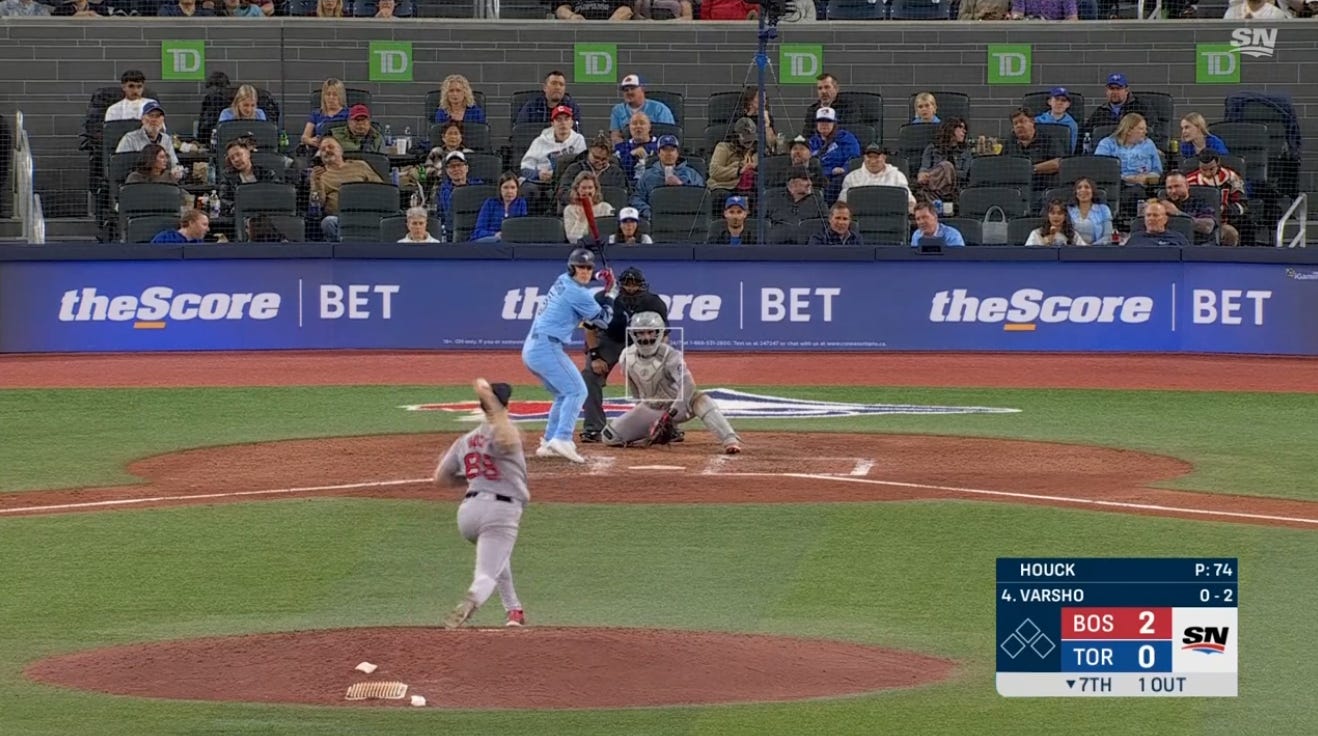



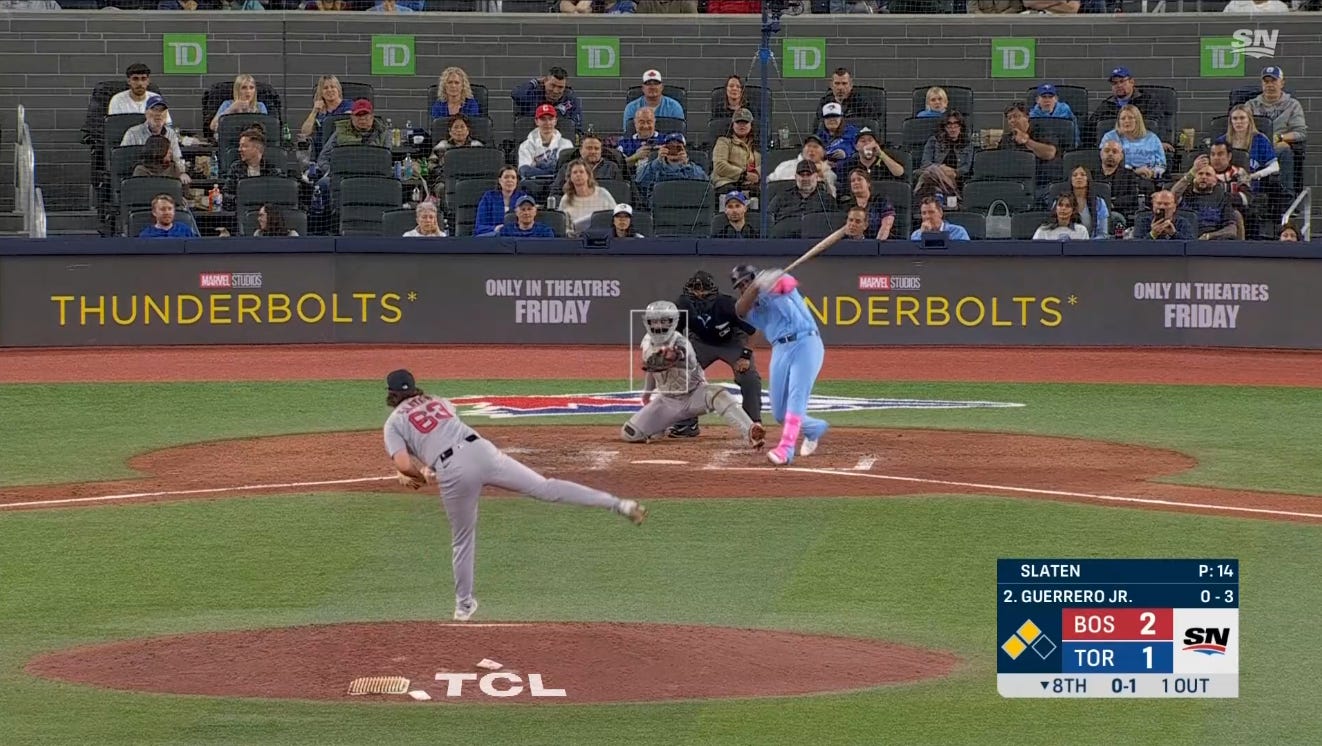

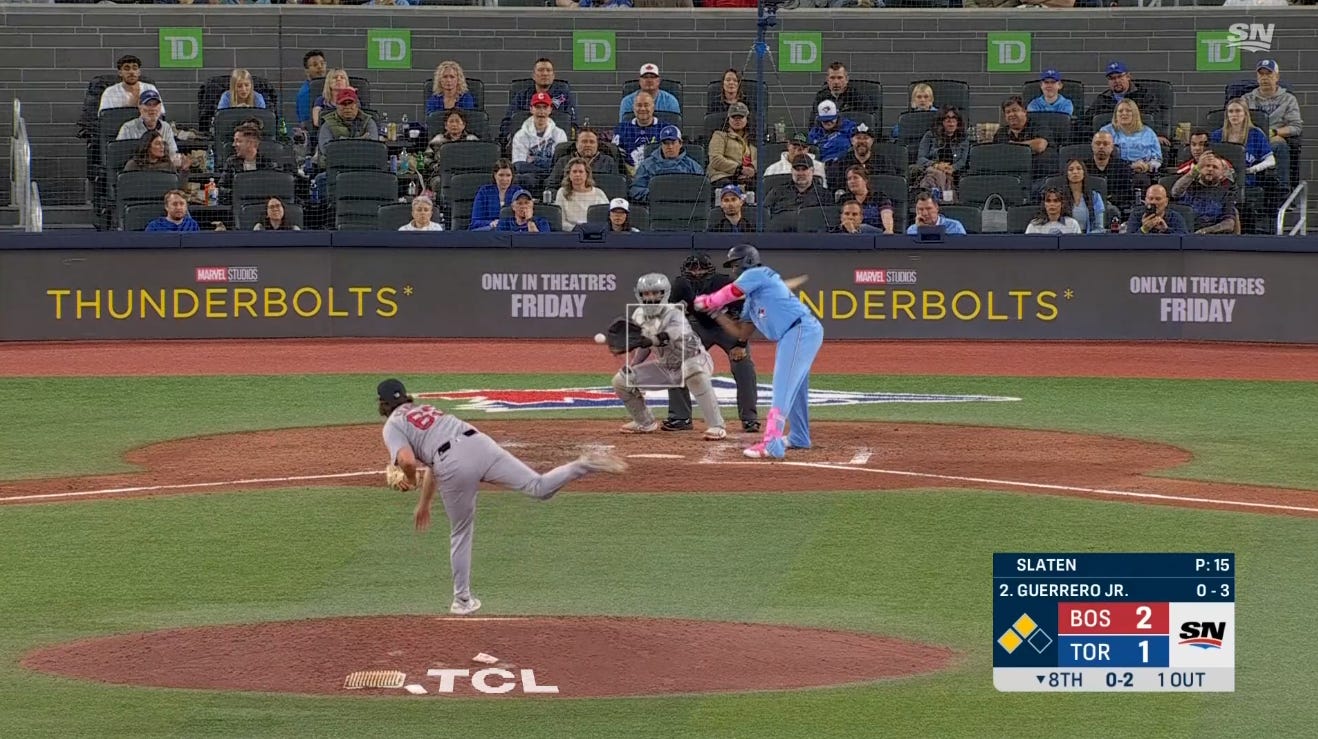

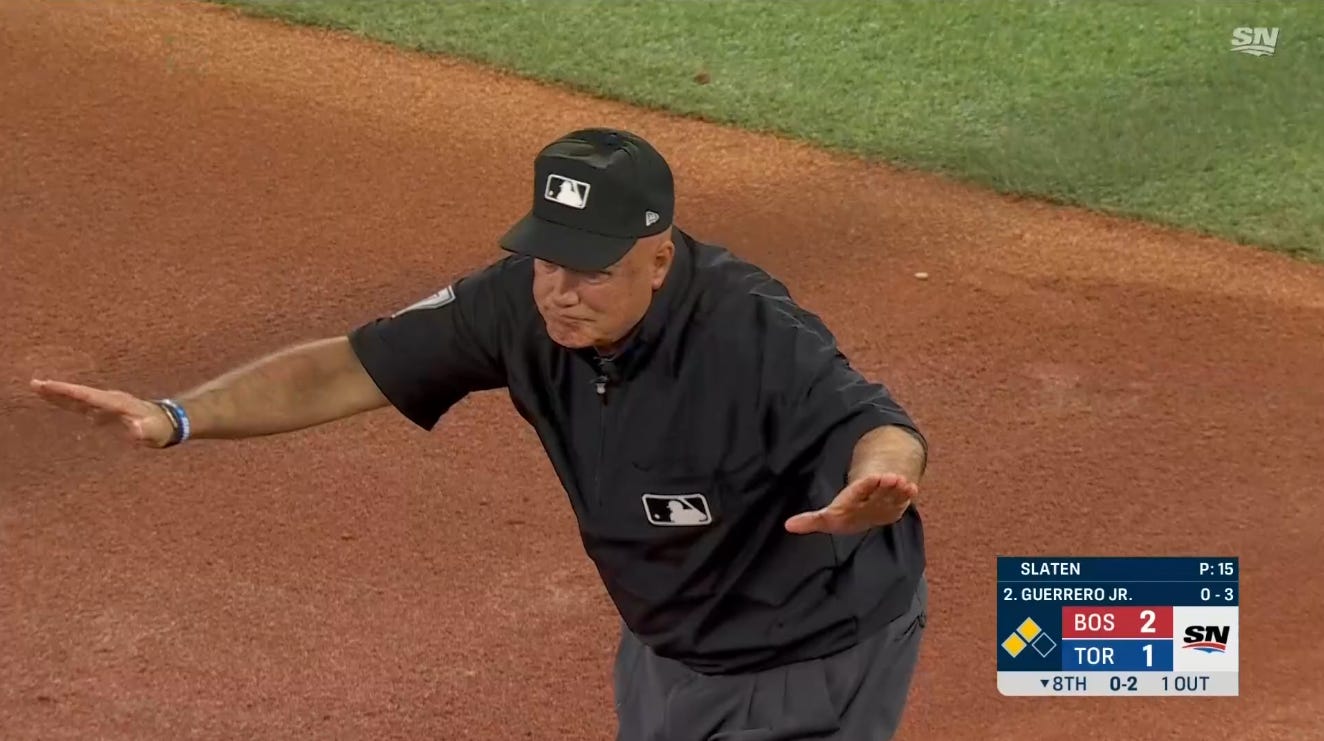


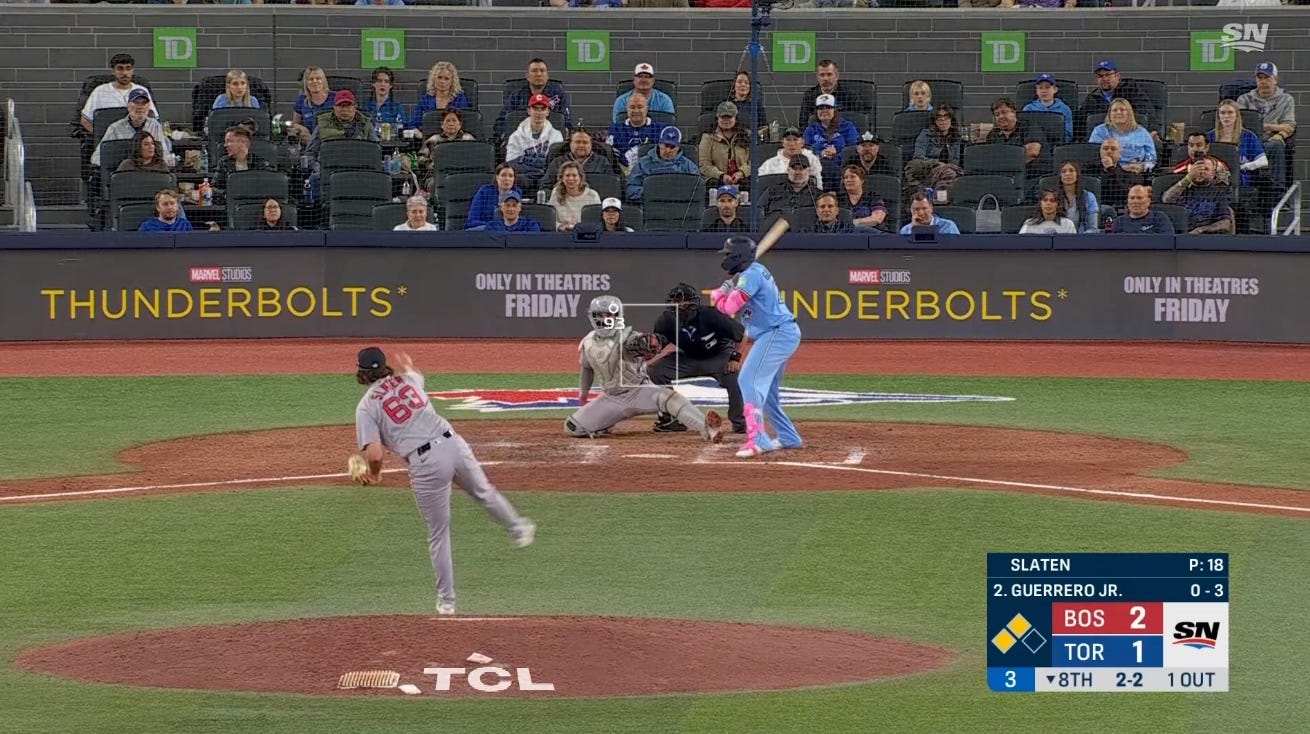









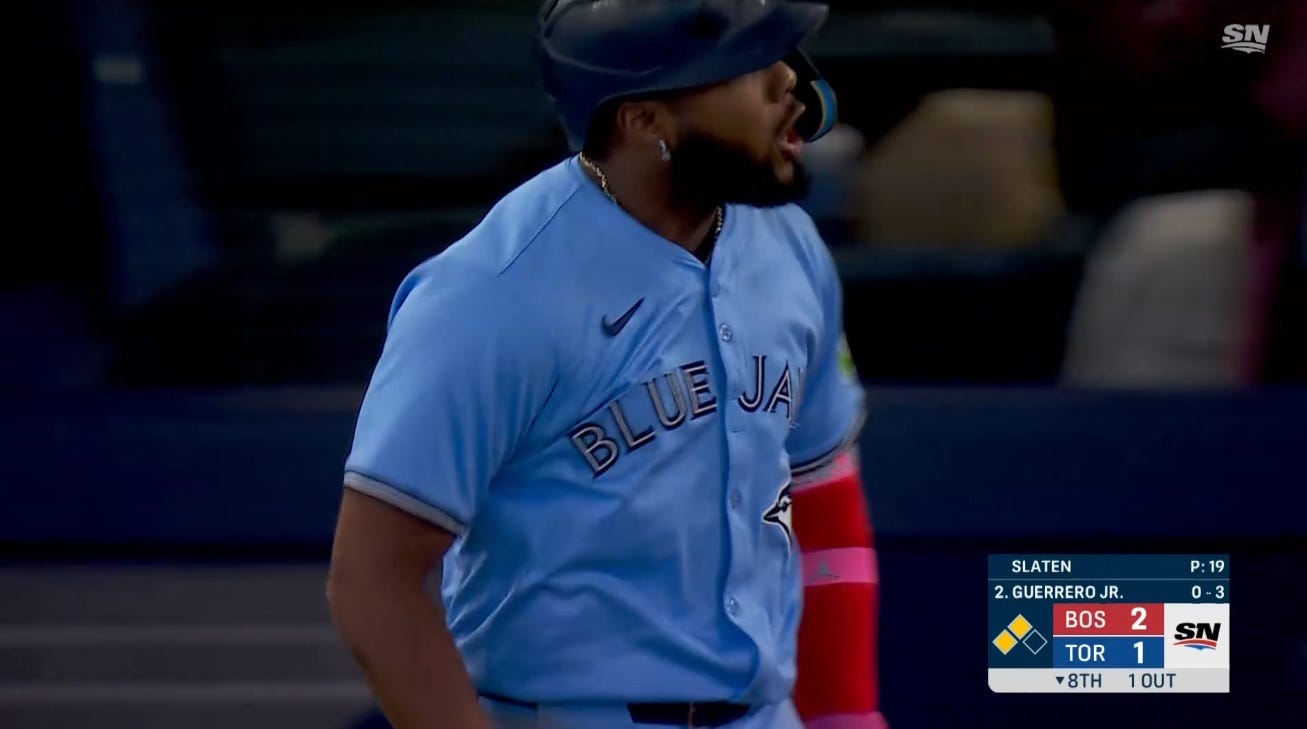

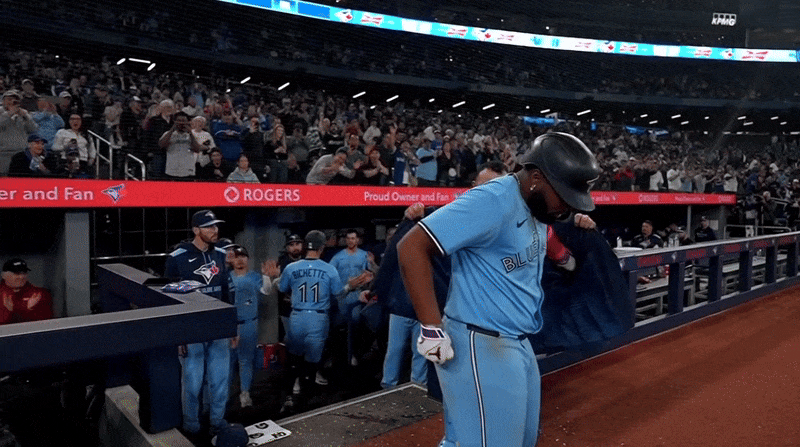

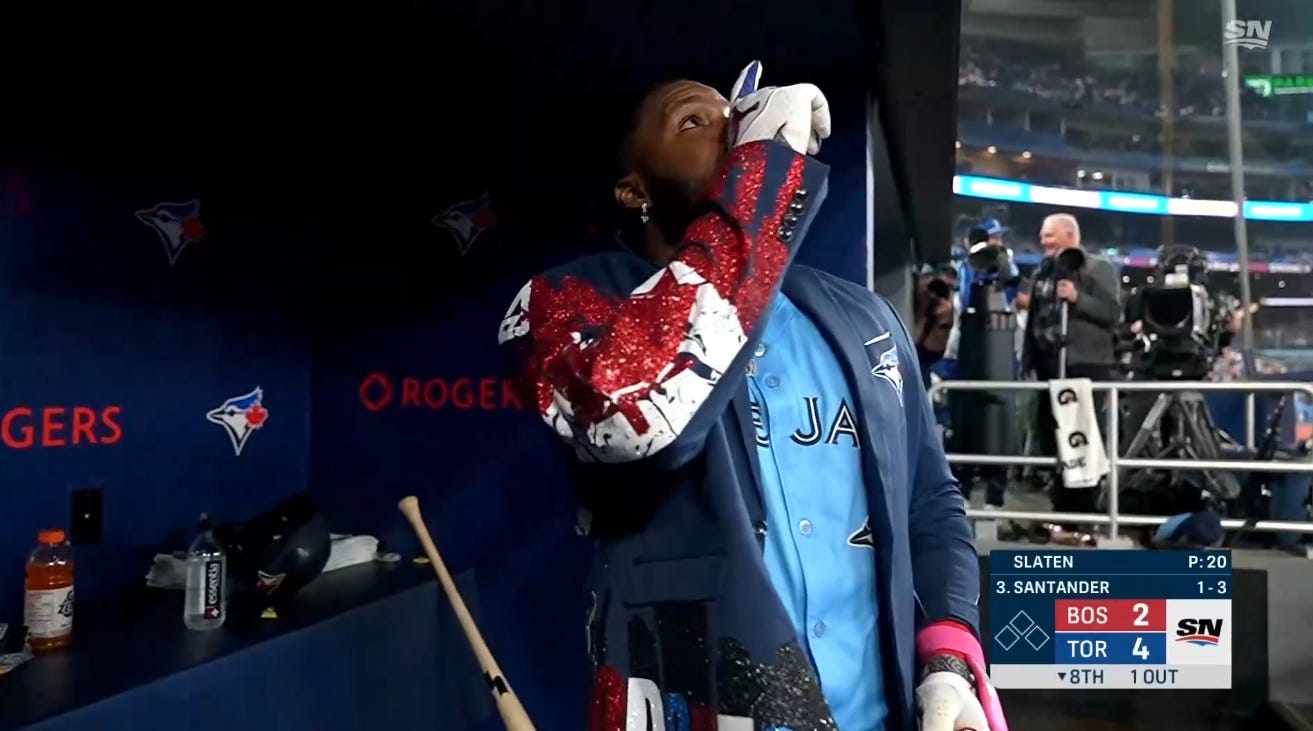


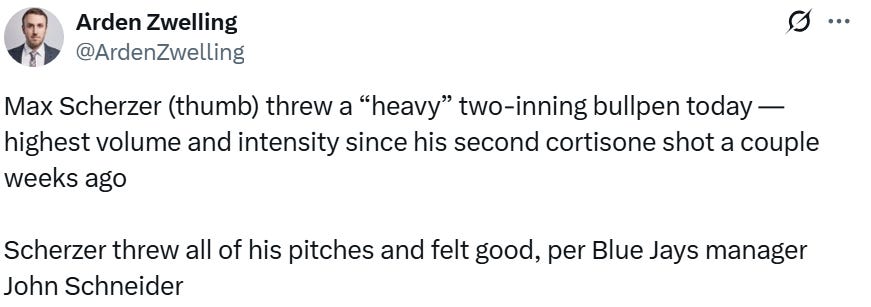

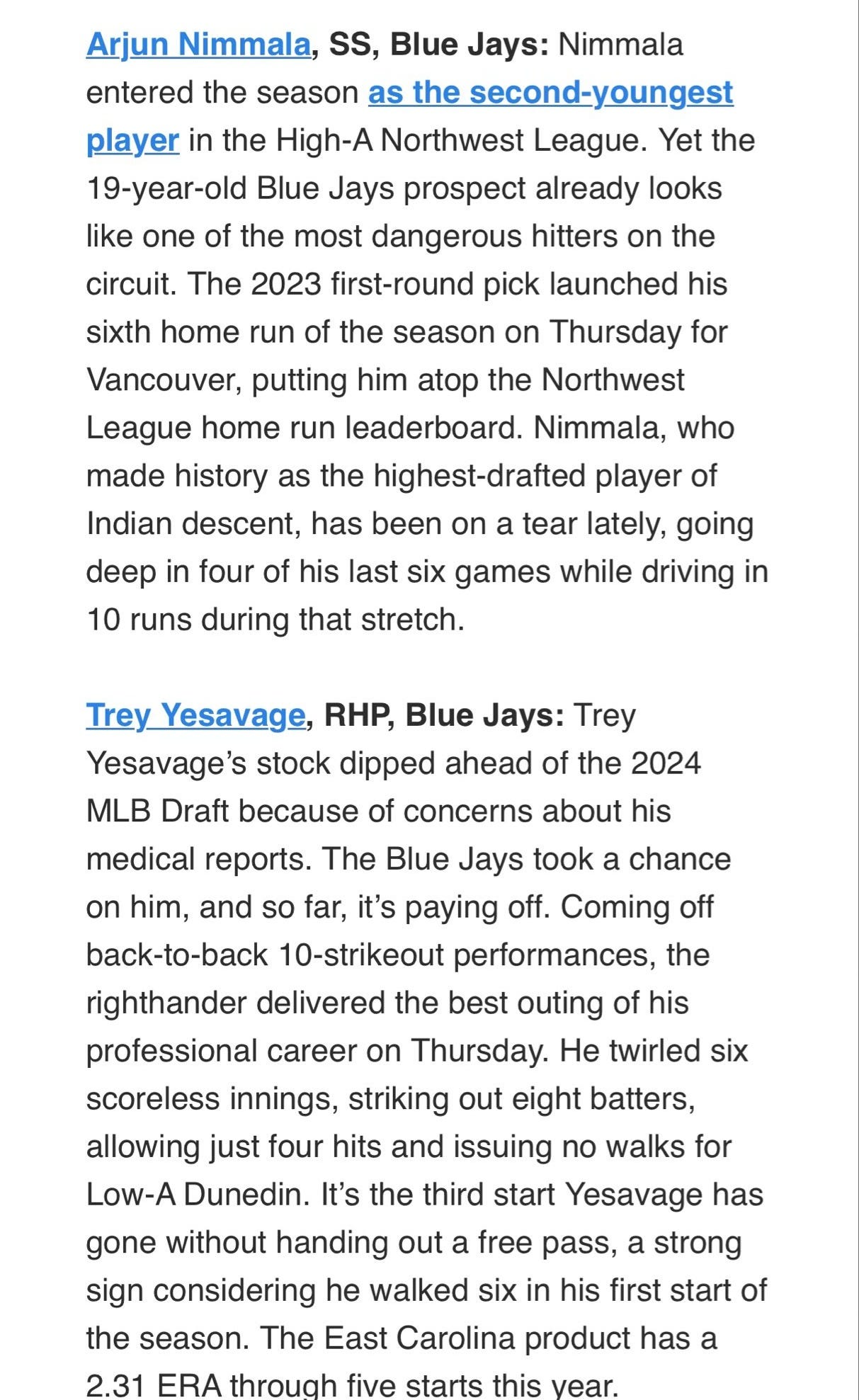
Great post, thanks for the work in this.
Stoeten, curious why you are looking at average EV. And I think you've mentioned Max EV in other posts. Neither are, as I understand it, good stats. But don't take my word for it. Here's Ben Clemens:
https://blogs.fangraphs.com/you-cant-fake-exit-velocity/
"In a given year, 15.8% of batters see their average exit velocity improve or decline by at least a standard deviation. It’s a noisy statistic, in other words; you might think that you can tell the difference between two hitters based on their average exit velocities, but there’s a decent chance that you’re being deceived by variance. Hitters change their average exit velocities by a whole standard deviation four times as frequently as they change their top-end power. One year’s data point could easily be a mirage."
"maximum exit velocity is too noisy; 13% of hitters changed theirs by at least a standard deviation from year to year. I think that’s a measurement issue, as it’s easier to crush one batted ball than to crush enough to move up your 95th-percentile mark."
Finally, is average EV and Max EV the loud tools that have you and Nick intrigued by Barger's potential? Davy Andrews went through different exit velo stats to try and figure out which might be the best at predicting future performance of young players based on small sample sizes.
https://blogs.fangraphs.com/the-doomed-search-for-a-perfect-way-to-interpret-exit-velocity-data/
Interesting read, and he settled on Best Speed, which is categorized as EV50 on Statcast's "Exit Velocity & Barrels Leaderboard." Andrews notes that the average Best Speed / EV50 is about 100mph. Barger's Best Speed/EV50 was 100.6mph in 2024 after 149 batted balls.
https://baseballsavant.mlb.com/leaderboard/statcast?type=batter&year=2024&position=&team=141&min=100&sort=avg_best_speed&sortDir=desc
This year, he's up to 102.5 but after just 27 batted balls. Last summer I got real bored (was I was supposed to watch the Jays limp along?) and crunched the numbers to try and recreate Andrews's research. Think I managed it. But most importantly, I think the standard deviation for Best Speed / EV50 is 2.4mph, with the average actually 99.6 mph. So if Barger can keep this up, that's a real improvement and make him an above average hitter when he makes contact. But big if since as Andrews notes:
"Best speed[/EV50] also tends to be sticky from year to year. There have been 1,080 cases where a player had at least 100 tracked batted balls in two consecutive years, and those players have changed their best speed by more than one standard deviation just 6.6% of the time."